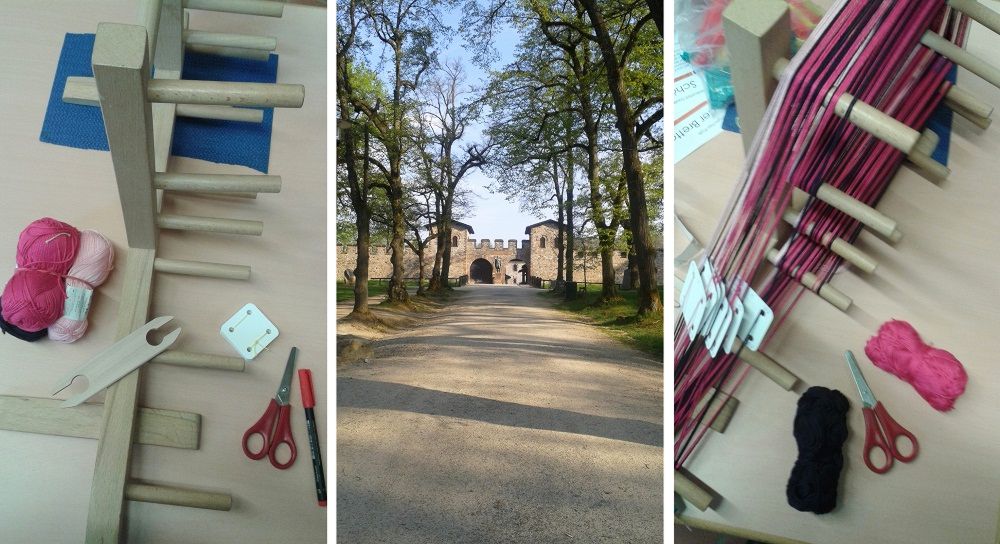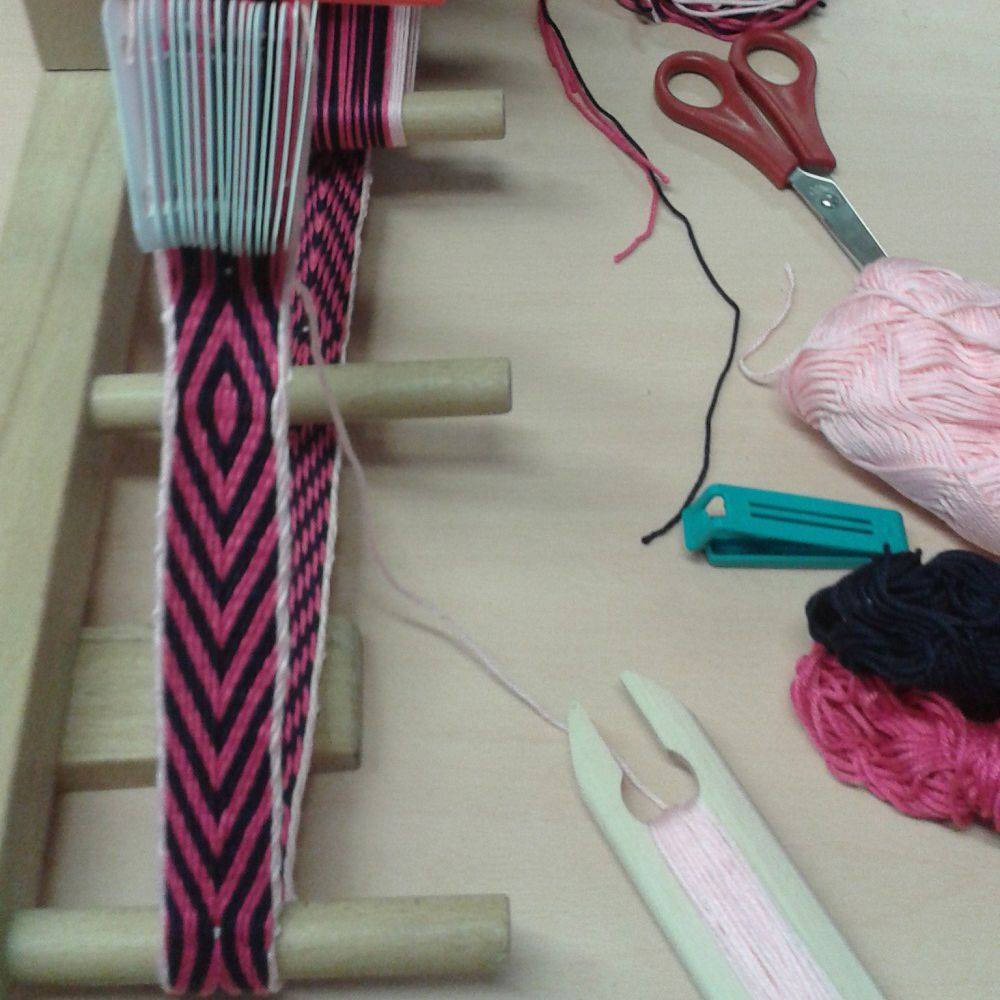Hello everybody! Despite appearances, I haven’t actually fallen off the edges of the earth (wheee!); instead, I got a new day job at the beginning of the new year, and it’s taken me a while to get used to the new rhythm of my daily life.
What’s really exciting about this life with the new day job is that for the first time in my adult life, I actually have free weekends, which leaves me with enough time for all kinds of fun things.
Like a tablet weaving workshop.
(Tablet-what?!?)
It’s a really old technique for weaving ribbons and fabric borders. The oldest archaeological finds date to 900-800 BC, but murals found in Greece suggest that tablet weaving might even be older and might have been used to create ribbons as early as 1500 BC. Iron Age Celts certainly loved it, as did Germanic tribes and the Vikings later on. In Europe the craft continued to be popular until the 15th century, when it started to slowly disappear.
“Tablet” in this context refers to flat pieces of bark, bone, stone, leather, horn, wood, or (more recently) cardboard into which holes have been drilled. Through these, the warp is threaded. When you then turn the tablets, different threads are lifted, and by using various colors for the warp, patterns are created.
Traditionally, the weavers would have tied one end of the warp around their belt and the other around a piece of furniture, a pole, or perhaps their own foot, but these days, small looms are available, which make the whole process a lot more comfortable.
If you ever manage to thread them, that is.
When I attended the aforementioned workshop, the threading of the dratted loom took me half a day, and at times, I was ready to give the whole thing up, go home, and have a good cry.
But once you have managed to thread the dratted thing, it is very easy to create simple patterns – though as a beginner you will inevitably struggle with tension, knobbly edges, and, worst of all, loose threads. And if you’re really lucky, you even manage to pull some of the warp threads off the loom! Hooray!
But all the trouble is worth it at the end: Not only can you create the most intricate patterns with tablet weaving, but the resulting ribbons are also very strong and sturdy. And who knows? While you’re weaving you might even make new friends as you and your neighbor commiserate over the tribulations with the tablets.
And this, really, was one of the main reasons for me to take the workshop: I wanted to explore an old craft that would have brought women together in the past. I find it fascinating to explore explore female communities – and as all crafters know, pattern swapping is a great way to strengthen communal bonds! 🙂



Congrats on the new job, Sandy. This looks like a fun craft I may want to try someday (so many crafts, so little time). It looks the same or similar to the method I’ve saw some time ago to create sashes for Lithuanian folk costumes. I found a Pinterest link with some examples. https://www.pinterest.com/pin/129126714289843987/
[…] Practical Research: Tablet Weaving, or, When Sandy Did Battle with an Ancient Craft Hello everybody! Despite appearances, I haven’t actually fallen off the edges of the earth (wheee!); instead, I got a new day job at the beginning of the new year, and it’s taken me a while to get used to the … Continue reading → […]
Super cool. A lot of my friends do this. I just ordered 10 feet of this from an etsy shop for a costume I’m working on. Have you seen the directions for weaving letters and numbers? I want naughty garters!
https://sites.google.com/site/elenasthreads/card-weaving/my-card-weaving-patterns